- Funs Jacobs
- Posts
- This Is The Next Shift In Social Media
This Is The Next Shift In Social Media
Social media is changing again and your current playbook is old; this article shows the signals, names the players, and gives you a simple plan.
Everything Is Being Socialized
Social Media has changed everything, and by everything, I mean eeeeverything. From businesses, to relationships, to work, to maybe even our brains. It’s pretty crazy to think that it’s “only” about 20 years old. I definitely remember the times before social media.
Friends who are reading this, and already knew me back then, know that I always jumped on every new thing that was happening on the internet very fast. My Gmail account, which I still use until this day, I got when Gmail was still “invite only”. I started my Twitter account in June 2008 and my Instagram account in October 2011 (1-year after they launched). I remember so many of my friends laughed at all the crazy stuff I did on these platforms. The “memories” function on Facebook is sometimes wonderful, sometimes so cringe 🤣! I used an app that connected my Twitter account to Facebook, so everything I posted on Twitter ended up on my Facebook feed as well. Damn the things I was posting back then, hilarious to now read back.
Quick side step. What I find interesting is that back then, in three different parts of the world, some sort of "Facebook” was being built. All separate from each other, three great entrepeneurs came with the same idea/need and got serious traction. Facebook in the US, VKontakte in Russia (by Pavel Durov, the founder of Telegram) and our beloved Hyves in The Netherlands by Raymond Spanjar (he wrote a great book about it, for the Dutchies).
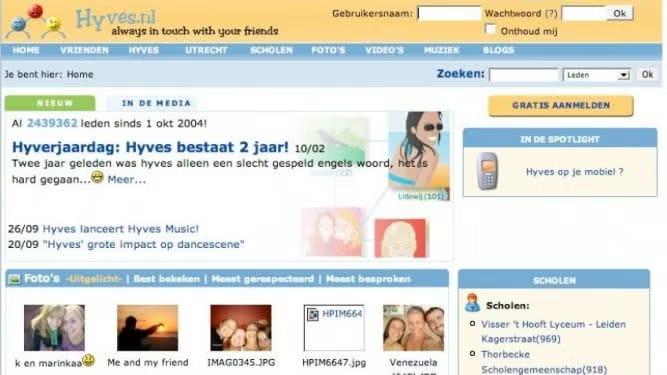
Hyves launched in 2004, grew to over 10 million accounts, was acquired by Telegraaf Media Groep on November 1, 2010, and shut down its social network in December 2013.
All social media started in order to connect with friends, family, colleagues. It was personal feeds, personal updates. This quickly followed by the fact that you could now have a different look into the lives of your favorite celebrities. People always wondered why someone would care about a tweet by Brad Pitt, that he was eating his lunch. I think it was just the first time we got “closer” to people that were very far and only visible on TV screens, which intrigued a lot of fans.
Things slowly but surely evolved from there. I will never forget the moment that Instagram introduced video to its, until then, photo sharing app in 2013. You could post 15 second videos on IG now. Few years later, Conor McGregor fought Jose Aldo in late 2015 and I remember the meme so vividly that the whole fight “fit on Instagram” as McGregor knocked Aldo out in just 13 seconds 🤣. Interestingly enough, it took Instagram 3 years to extend the video length to a full 60 seconds and another five years to go full length video.
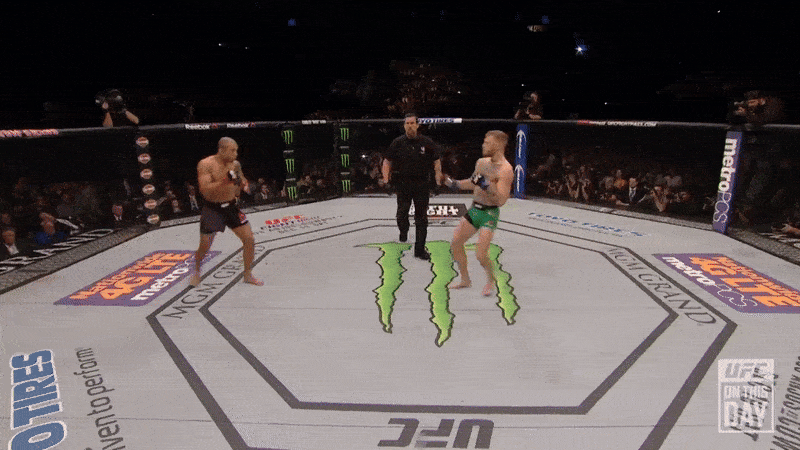
13 seconds, a full IG video in 2015 🤣
At this point, social media became way more than just friends & family sharing or following your favorite celebrities. It became THE place for all things culture, news, breaking stories, brands, content creators and so much more. All the things we are used to now.
The reason why I am writing about it now is because I have a feeling that we are at another new step in the evolution of social media.
With all these new technologies that are pushing forward and changing everything, how will it affect social media? Do we really think that Instagram, TikTok etc, are the end state of social platforms? It’s easier to bet on the “no they aren’t” side in my opinion. So what will it be?
A flood of new social apps
Over the last few months, we have seen a lot of different companies announce some sort of social app. An app that has a feed, full of content (all based on the TikTok swipe mechanism that everyone got familiar with), where you can follow/like/share each other etc. Let’s list all the ones I have seen at least:
OpenAI — Sora
The big release of last week. AI-native short video. A social feed of model-generated clips with selfie “cameos” so friends can put your likeness in skits and remixes. We have seen a lot of Sora videos that went viral, not just because of the insane quality but also because of the social element to them. “Remixing” famous people, or friends, has shown to be pretty sticky so far.
Meta — Vibes
AI-video discovery and creation inside the Meta AI app. Short, remixable clips you can post to the Vibes feed and cross-share to Instagram and Facebook.
Roblox - Moments
Short-form video feed inside Roblox where players capture, trim, and post up to 30-second gameplay clips, add music, and write a caption; viewers can scroll the feed, react, and tap Join to jump straight into the experience shown.
Spotify — Messages
Chat about audio inside Spotify. One-to-one threads built around songs, podcasts, and audiobooks you’re sharing. Not really a TikTok style feed per se, but still interesting that they try to keep the social element of sharing audio with friends/family inside their app.
Zora
Onchain social where every post is a tradable “content coin,” paired with a creator coin. Tokenized posts and profiles, primarily on Base. Not super new, but became a lot more popular with a strong set of users and creators.
Base app (by Coinbase)
An onchain everything app with a Farcaster social feed, Zora-powered coinable posts, XMTP chat, and payments. Social plus trading in one feed.
Pika Labs - Social App
Selfie-to-short AI video on iOS with a built-in feed. Template-style remixes and face-driven effects. Very similar to what Sora announced with “cameo” feature. (I am very surprised by their horrible looking blog by the way 😅)
Character.AI
Character.AI is a chat platform where you talk with AI characters. Users and creators build these characters with specific personalities and skills, then others can chat with them one-on-one, join group chats, or now browse a Feed of character-made posts and clips. This Feed is an AI-native, scrollable feed built around Characters, Scenes, Streams, and creator-made short videos. Posts are designed to be interactive and remixable, with formats like Chat Snippets, Character Cards, Streams, and Avatar FX for rapid clip creation.
X (aka Twitter)
Honorable mention. They are of course a massive social platform already but they are betting strongly on a new sort of AI filled feed with the launch of their viral companions (which people are falling in love with), the super fast generation of both image and video.
And that’s not all, more and more large companies and brands are adding social style features to their platforms:
Twitch: Vertical discovery feed and Stories for stream clips.
LinkedIn: Testing a TikTok-style video stream for work tips and B2B creators.
WhatsApp: Channels for one-to-many updates inside chat.
Telegram: Stories for quick, ephemeral posts with privacy controls.
Netflix: Swipeable clip feed to preview shows faster.
Substack: Video feed for short updates and podcast promos.
Shopify Shop: More visual home feed for shoppable brand storytelling.
Yelp: AI-assisted feed with restaurant videos for local discovery.
Uber Eats: Piloting a TikTok-like feed of nearby restaurant videos.
DoorDash: Creator program seeding short food videos in-app.
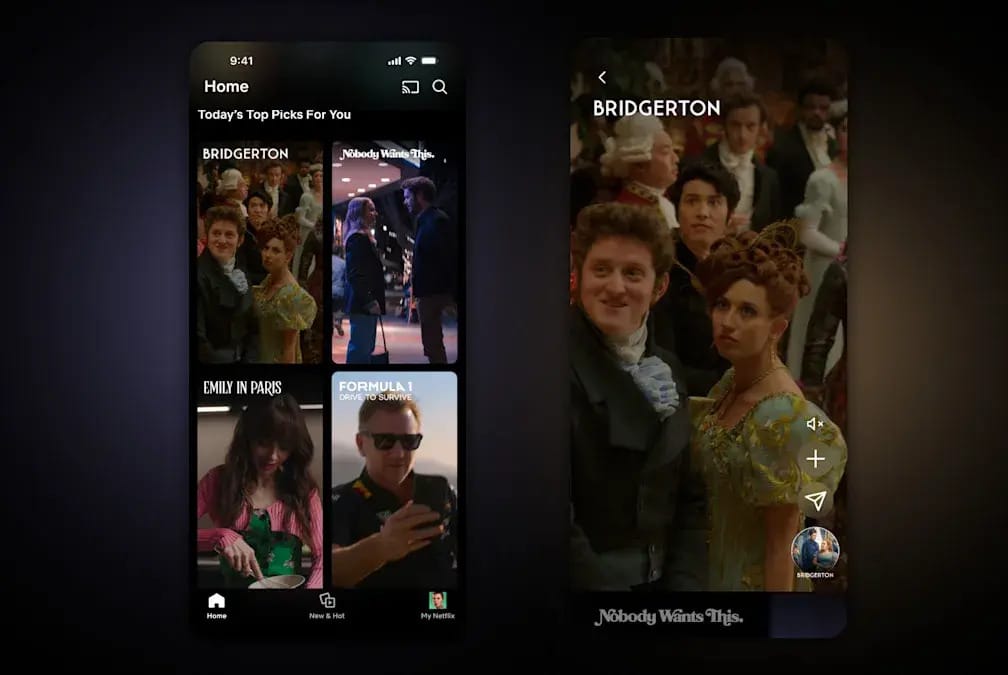
Netflix tested their vertical feed during summer. From the clips, you’ll be able to watch the show or movie right away, or you can add it to your list of saved things to watch or pass the clip along to a friend.
So it’s clear, everyone wants to be social. But why? The only answer I can come up with now is pretty simple: attention.
It’s the same reason why OpenAI announced apps INSIDE their GPT app, keep the user inside their own platform. Instead of clicking and going directly to the booking.com or Figma platform. Keep the eyeballs on your platform at all times. The same reason why Spotify makes it possible to share their content inside the app, instead of going to WhatsApp to message your friend their with a link. The data point “time spent on platform” is an important one for valuations, investment rounds, etc etc.
Short form is the King & Queen of content
Where in the early days we wanted the ability to post longer and longer videos on Instagram, it is now all about short form content. Even YouTube, the original giant for video content, eventually introduced YouTube shorts in 2020 and it’s been a massive success for them ever since.
Pretty funny to think back to Vine now. Remember that platform? It exploded onto the scene in 2013 and everyone was convinced it would be a serious contender to Instagram. Their focus: 6 seconds, looped, videos. They were already acquired by Twitter before they went live, crazy.
By Aug 2015 about 200 million people were watching Vine videos each month, and was serving 1.5 billion loops per day. But it fell off as fast as it had grown and Twitter announced the shutdown on Oct 27, 2016.

Vine.. now looking back it almost looks like they were just too soon. Great idea, wrong timing.
What did short form content do to us? I don’t think I have to add research when I say that it feels like our attention spans have shortened even more..
And then… there was AI
As we go back to all the new social apps that have launched lately we see that a lot of them are very AI focused. Endless streams of AI generated content by companies like OpenAI, Meta, Pika, xAI and more. Will this last? Some people are afraid of an overload of AI slop (aka cheap, shitty, useless content), that still will turn some people into absolute addicts.
I am afraid that a part of society will definitely fall to this. Especially when things start to be generated for specifically you. As we said many times before, the perfect piece of content, generated just for you, at the exact right time, always…
I think two other things might happen. Or need to happen.
1) Niche specific apps that will eventually become a place for a specific group of people, for a specific category of content. Instead of just a few major social platforms we might have hundreds of them, and they will become more niche. Just like there are Discord communities and Reddit groups for all types of groups.
2) Human only feeds. As discussed in my article titled “AI is flooding the internet. Here is the counter move”. We are going to need some sort of human identification layer, so that people can prove they are human. (blockchain please come in). If that happens, certain social platforms might go the opposite direction of the AI feeds and go fully (or almost fully) human. Basically giving us, users, more power of the algorithm and what it will feed us.
One of the most interesting, and maybe mostly overlooked, feature of OpenAI’s Sora app is just that. They mention on their launch post the following about it: “We are giving users the tools and optionality to be in control of what they see on the feed. Using OpenAI's existing large language models, we have developed a new class of recommender algorithms that can be instructed through natural language.”
More control, hopefully in the future also on human vs bots.
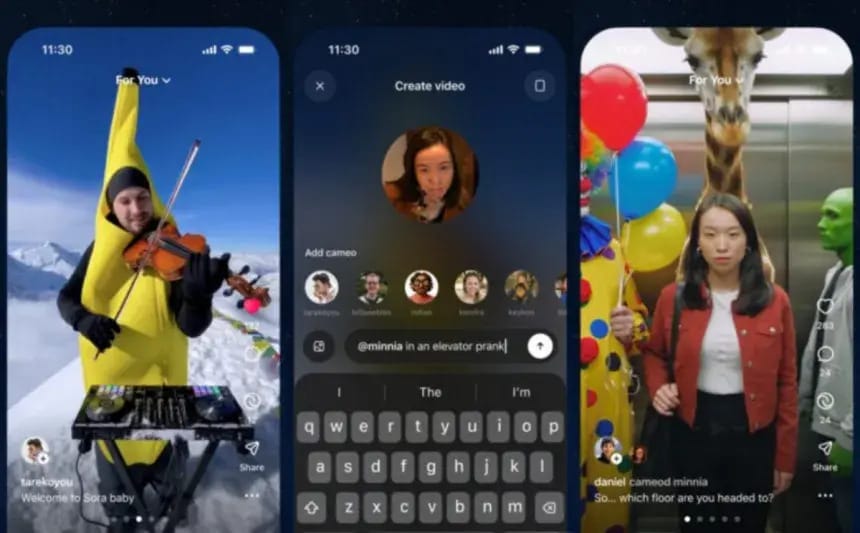
Interesting move by OpenAI to give their users more control over the algorithm, more control over what you get shown. A sign of what is to come?
What should brands do about all these new platforms?
A question that many people and/or brands, might be asking themselves is what should their social media strategy be moving forward? In the last 20-years, it was pretty obvious that most companies had to move with the platforms that were becoming popular. Once your audience was there, you had to be present. Therefore, a “social media strategy” probably started with Facebook only and then got expanded when Instagram, Snapchat, Twitter, and eventually TikTok exploded. Your audience is there, so go there and start creating content for this platform. Simple right? Yes, but what about now? As we just discussed, there is about 7-8 new platforms that launched in the last few months and they all have millions of users?
My early suggestion would be: don’t go there. It doesn’t make any sense. If you decide to expand your strategy with a new platform, you have to have a couple of things in my opinion:
1- A clear understanding of the platform, it’s specific way of working, culture, audience and content.
2- A long term vision. You won’t spend all the money and effort just to stop it all after trying it for just a couple of months. Either commit fully with an approach that is uniquely you (brand) or don’t do it at all.
3- As I said, find your unique approach. What does your brand look, feel and sound like on platform xyz.
So how do you do that for 7-8 new platforms? Like I said, you don’t.
This doesn’t mean though that you can’t utilize these new platforms and their audiences. I think what an interesting approach could potentially be is, as for many things, to work with creators.
All these platforms will eventually give birth to new kinds of creators who are specifically tied to these platforms. The days of “general influencer X who tries to move their audience to a new platform” are over in my opinion. Instead, every platform is extremely unique in terms of culture, audience, a type of content and so forth. Which will result in specific platform superstars.
When working with creators and testing these platforms. The data and response will tell you if this particular platform might be one to double down on. A perfect outcome.
A second thing that I would definitely take notice of as a brand, is the fact that there aren’t just new social media platforms popping up, but that other apps and brands want to become more social as well. Therefore, ask yourself the question: how social is your brand? When you are doing your next activation, how do people connect with each other and your brand?
As discussed last week, human connections will become so much more important because of all this new technology. Combined with the trend of everything becoming more social, it makes total sense if you ask me.
Closing Thoughts
It is clear that social media is evolving. Where “gaming” in my opinion has become a totally new social platform, AI is now creating completely new forms of social media. Just like Vine, there will be platforms that will try something and eventually fail. But that change is coming, is something we can’t deny anymore.
As a brand, stay true to who you are and see what fits and what doesn’t. Find creators that connect with your values and see if you can come up with something special.
But, there is one angle of social that we haven’t really discussed this week and that is the rise of AI avatars and agents. I think they will fundamentally change our relationships with the internet and technology, but maybe also in general.
Social media started with the friend graph, we scaled with the interest graph, and we are entering the agent graph where characters and copilots participate, not just people.
That is for next week! Thank you all for reading once again and would love to hear your thoughts on the social media of the future.
Much love,
Funs
(PS: I mentioned the founder (and still 100% owner) of Telegram, Pavel Durov, in the intro. Here’s a beautiful conversation with him about his values, his fight for privacy and freedom of speech and more. Fascinating character!)
PS... If you’re enjoying my articles, will you take 6 seconds and refer this to a friend? It goes a long way in helping me grow the newsletter (and help more people understand our current technology shift). Much appreciated!
PS 2... and if you are really loving it and want to buy me some coffee to support. Feel free! 😉
Thank you for reading and until next time!

Who am I and why you should be here:
Over the years, I’ve navigated industries like advertising, music, sports, and gaming, always chasing what’s next and figuring out how to make it work for brands, businesses, and myself. From strategizing for global companies to experimenting with the latest tech, I’ve been on a constant journey of learning and sharing.
This newsletter is where I’ll bring all of that together—my raw thoughts, ideas, and emotions about AI, blockchain, gaming, Gen Z & Alpha, and life in general. No perfection, just me being as real as it gets.
Every week (or whenever inspiration hits), I’ll share what’s on my mind: whether it’s deep dives into tech, rants about the state of the world, or random experiments that I got myself into. The goal? To keep it valuable, human, and worth your time.


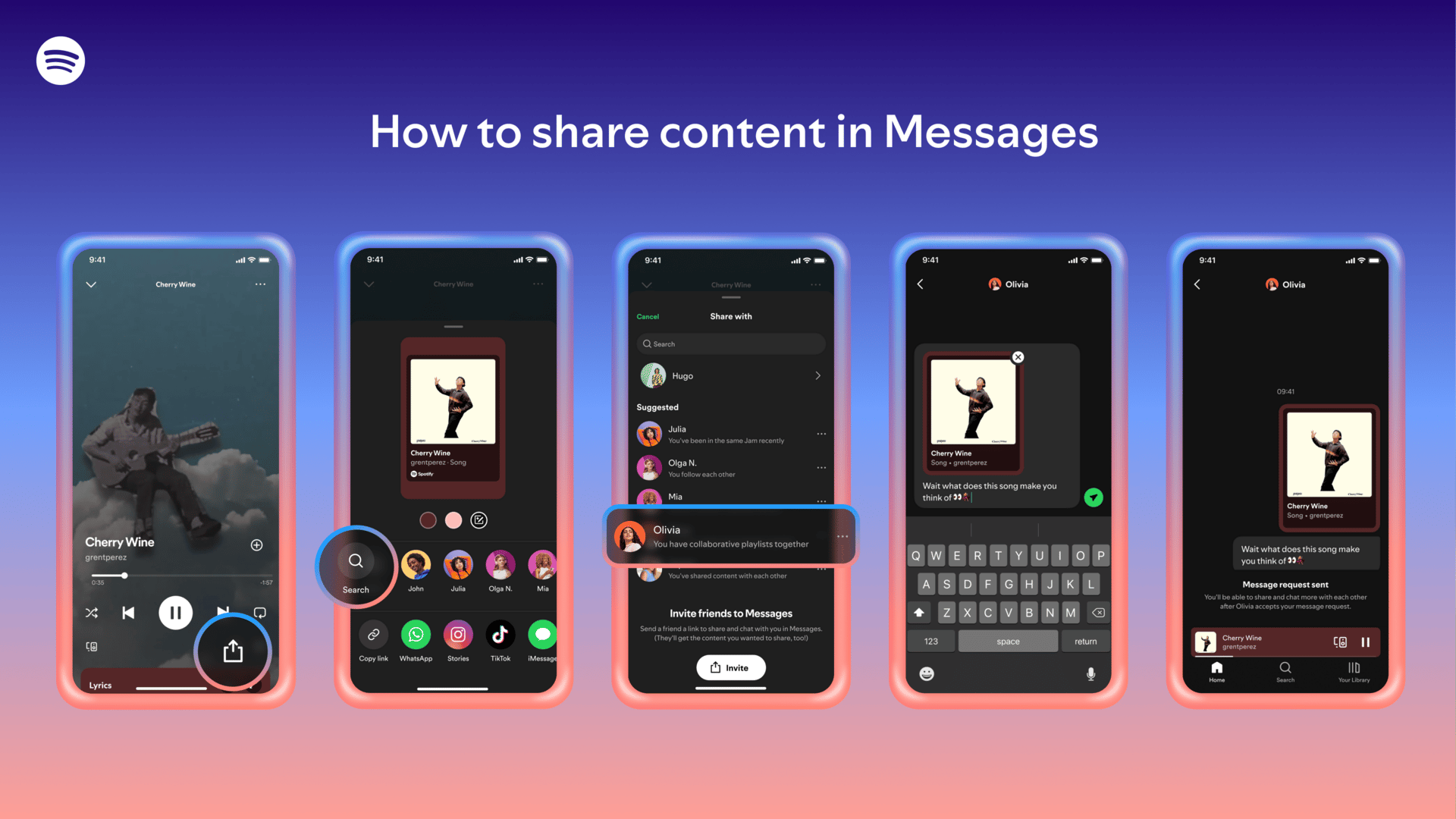
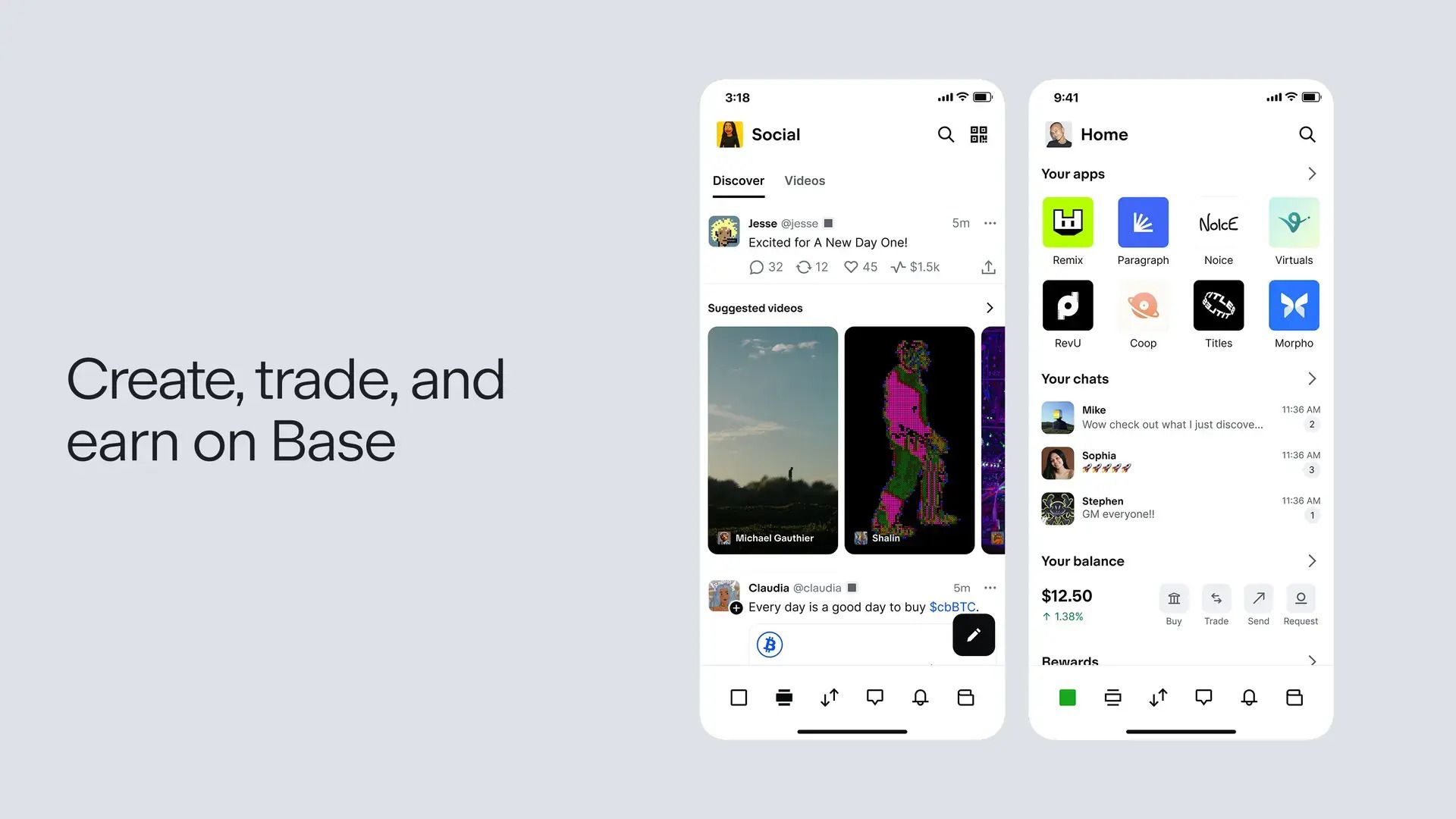

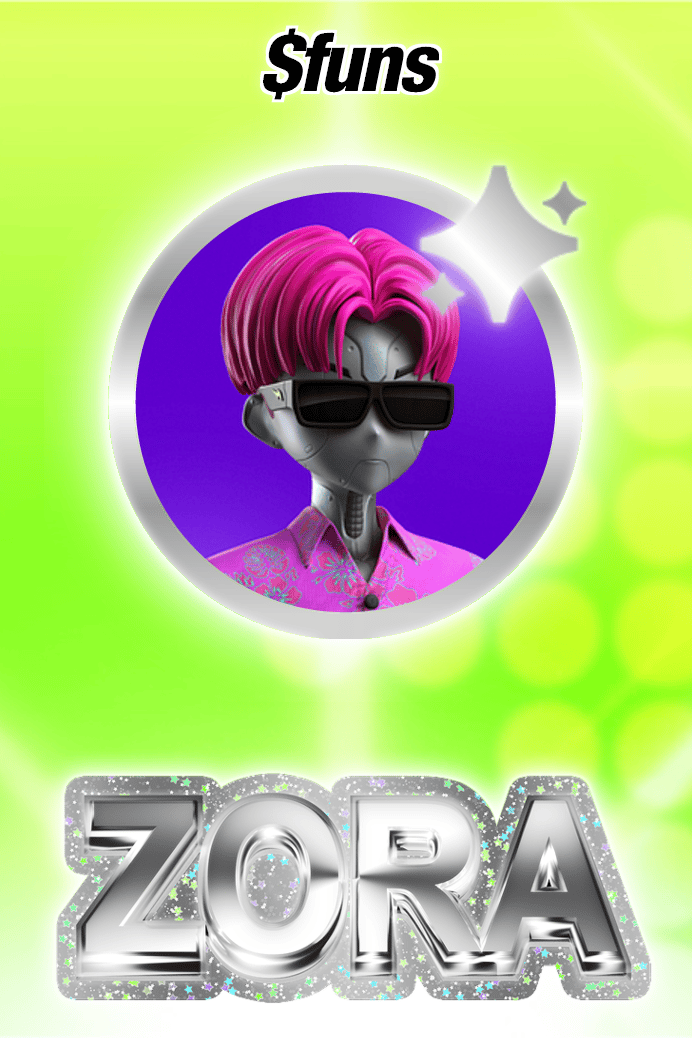
Reply